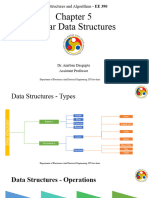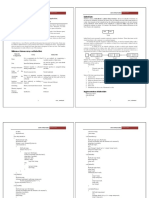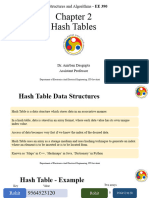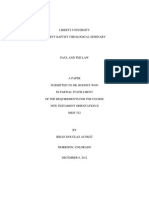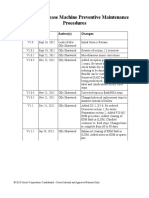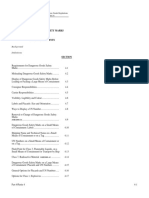0% found this document useful (0 votes)
62 views56 pages01 Linear Data Structures
The document discusses different data structures including arrays and linked lists. It describes what data structures are, why they are important, and different types of linear and non-linear data structures. It then provides details on array and linked list data structures, their operations, and compares arrays to linked lists.
Uploaded by
ravenna2202Copyright
© © All Rights Reserved
We take content rights seriously. If you suspect this is your content, claim it here.
Available Formats
Download as PPTX, PDF, TXT or read online on Scribd
0% found this document useful (0 votes)
62 views56 pages01 Linear Data Structures
The document discusses different data structures including arrays and linked lists. It describes what data structures are, why they are important, and different types of linear and non-linear data structures. It then provides details on array and linked list data structures, their operations, and compares arrays to linked lists.
Uploaded by
ravenna2202Copyright
© © All Rights Reserved
We take content rights seriously. If you suspect this is your content, claim it here.
Available Formats
Download as PPTX, PDF, TXT or read online on Scribd
/ 56
